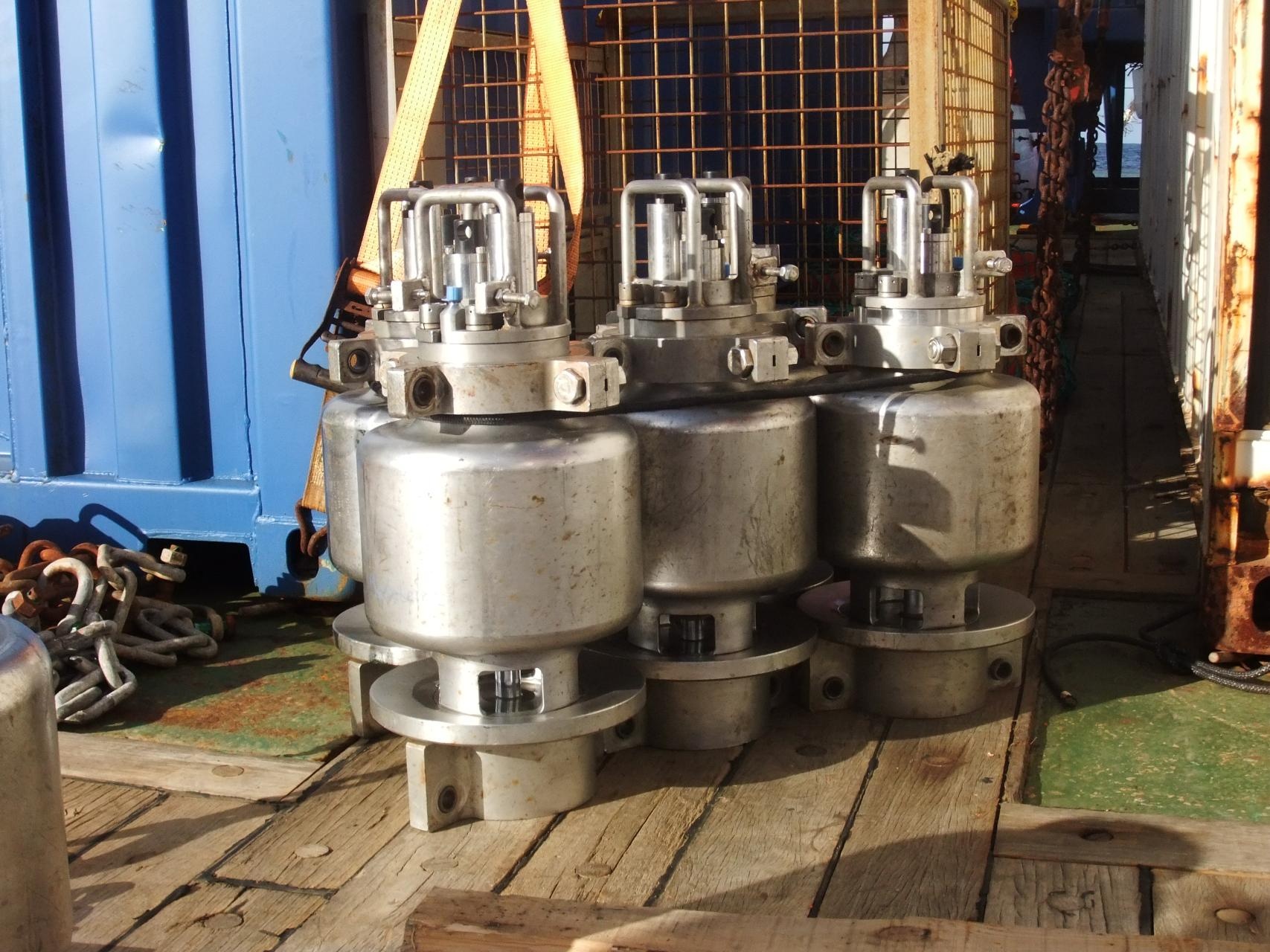Attention:
Airguns Cluster Refraction Seismic is part of the Marine Seismic Equipment.
Please note that operations with the Seismic Equipment can only be operated upon request. Request operations with the Seismic Equipoment to AWI Geophysics and AWI-Logistics in sufficient time prior to the cruise. The operations of the system require experienced scientific staff on board.
Summary
In the seismic refraction method, seismic waves are recorded that propagate along layer boundaries or as arcuate "diving waves" mainly sub-horizontally. The seismic signals, produced by controlled seismic sources, are recorded along lines of seismometers deployed on land or in the ocean (ocean-bottom seismometers). Although this method can also be used in engineering geology for near-surface investigations, we apply it to analyze deep crustal structures, the crust-mantle boundary and the uppermost mantle.
| Manufacturer | Sercel |
|---|---|
| Model | G-Gun 8.32 l |
| Serial No. | PS |
| Type | seismic profile |
| SENSOR-Link | ↪ |
Contacts
| Name | Institution | Role |
|---|---|---|
| Thorsten Eggers | Alfred Wegener Institute, Helmholtz Centre for Polar and Marine Research | Engineer In Charge |
| Alfred Wegener Institute for Polar and Marine Research | Alfred Wegener Institute, Helmholtz Centre for Polar and Marine Research | Owner |
| Karsten Gohl | Alfred Wegener Institute, Helmholtz Centre for Polar and Marine Research | Principal Investigator |
